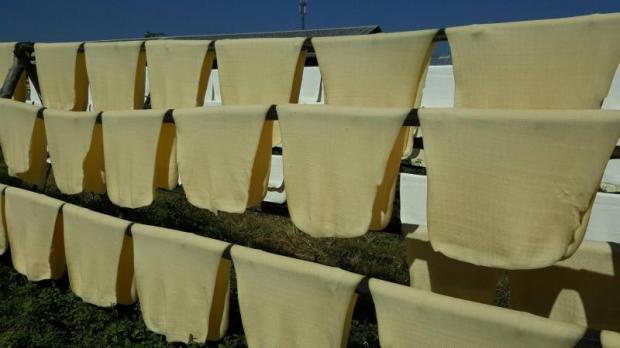Traders and industry officials are optimistic that rubber prices will start rising from this year as the global economy recovers and demand is set to exceed supply.

Rubber sheets are dried at a processing house in Buri Ram. Growers in the Notheast province are seeing higher prices after flooding in the South cut supply. SURACHAI PIRAKSA
Rubber prices have been struggling since plunging in the first quarter of 2016. Although demand is expected to be flat this year, especially as the car industry continues to struggle, the recent flooding in the South, Thailand’s major rubber growing area, and measures among major rubber producing countries to cut output would help trigger a rising trend in rubber prices.
“The outlook for rubber is expected to improve in 2017 amid the gradual global recovery, driven by emerging markets and developing economies,” said Chaiyos Sincharoenkul, president of the Thai Rubber Association (TRA).
The Bank of Thailand has forecast economic growth of 3.2% in 2017, the same rate as in the previous year, noting that downside risks to the economy largely from external factors.
The car industry, which consumes about 70% of total rubber production and largely supports rubber-related industries, is forecast to see flat growth in 2017.
The Federation of Thai Industries has forecast car production this year to reach the target of 2 million units. Car exports are also predicted to be flat this year at 1.22 million units, compared with 1.20 million expected to be shipped in 2016.
The tempered demand for rubber, however, is expected to be more than offset by the shortage in supply, according to the industry.
Supply has been for limited for several years as major rubber producing countries — Thailand, Indonesia and Malaysia — have cut annual rubber production substantially to shore up prices. Supply will be further limited by unfavourable weather.
Torrential rains and floods have hit southern Thailand, where around 80% of the country’s annual rubber output of 4.5 million tonnes is produced, disrupting tapping and cutting output.
There are no exact statistics about how much the rubber supply will be cut by the severe floods, but traders and officials at the TRA said about 5% of total output would be absent from the market.
The Meteorological Department expects the heavy rainfall to last for about two weeks, subsiding by the end of this month.
However, the end of the monsoon season at the end of January is unlikely to help improve the situation as that period marks the start of Thailand’s dry cool season, when rubber trees shed their leaves and stop producing latex.
The dry season normally starts in February and runs through mid-April, when monthly rubber output could drop by around 150,000 tonnes.
The fall in production is expected to support rubber prices, which started to rebound late last year and will continue to rise further in 2017, traders said.
The price of the world’s benchmark smoked rubber sheets hit a low of US$1.10 per kilogramme in 2016, or 80% below the record high of $6.40 per kg in February 2011, because of a glut during the global economic slump. This decrease included a slowdown in China, the world’s biggest rubber consumer.
The price started to rebound in the last quarter of 2016, when Opec and non-Opec countries agreed to cut global oil supply by 1.2 million barrels per day during the first half of 2017.
The cut in oil supply led the price of synthetic rubber, an alternative product of natural rubber, to rise in line with global oil prices and encouraged major tyre makers to switch to natural rubber.
The price of natural rubber rose from its lowest at $1.20 per kg in early 2016 to $1.60 in the last quarter of the year and $2.40 per kg in late 2016.
Besides these supporting factors, rubber supply is also expected to fall short of demand for a few years as the measures to cut down rubber trees to shore up prices by major producing countries means a drop in supply for the next seven years.
Rubber trees need up to seven years to mature and start producing latex.
“With these factors, I expect the average rubber price to stay above $2 per kg for the whole of 2017,” said Luckchai Kittipol, chief executive of Thai Hua Rubber Plc, one of the country’s top three rubber exporters, and former president of the TRA.
However, there are some major risks that could prevent rubber prices from rising substantially, traders said.
“A major concern is the economic policy of the incoming US president, Donald Trump,” said Mr Luckchai. Any trade barriers or protectionist measures could have a negative impact on prices, he said.





























